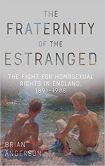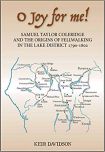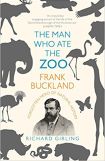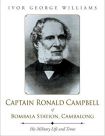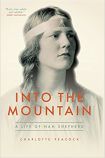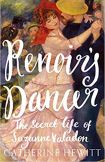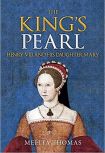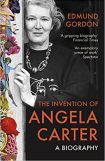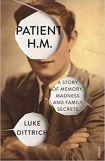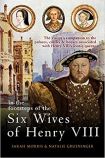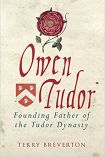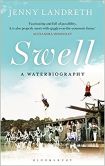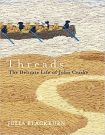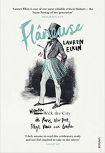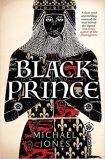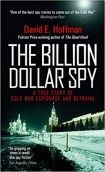|
|
The Fraternity of the Estranged: The Fight for Homosexual Rights in England, 1891-1908 by Brian AndersonOriginally passed in 1885, the law that had made homosexual relations a crime remained in place for 82 years. But during this time, restrictions on same-sex relationships did not go unchallenged. Between 1891 and 1908, three books on the nature of homosexuality appeared. They were written by two homosexual men: Edward Carpenter and John Addington Symonds, as well as the heterosexual Havelock Ellis. Exploring the margins of society and studying homosexuality was common on the European Continent, but barely talked about in the UK, so the publications of these men were hugely significant – contributing to the scientific understanding of homosexuality, and beginning the struggle for recognition and equality, leading to the milestone legalisation of same-sex relationships in 1967. Full Review |
|
|
O Joy for me! by Keir Davidson
Oh Joy for me! gives Coleridge credit for being the first person to walk the mountains alone, not because he had to for work, as a miner, quarryman, shepherd or pack-horse driver, but because he wanted to for pleasure and adventure. His rapturous encounters with their natural beauty, and its literary consequences, changed our view of the world. Full Review |
|
|
Find Another Place by Ben Graff
When Ben Graff's grandfather Martin handed him a plastic folder of handwritten notes from his journal, he didn't take much notice of it. At the age of 24, Graff didn't realise the gravity of the pages he was holding. Full Review |
|
|
The Man Who Ate the Zoo: Frank Buckland, forgotten hero of natural history by Richard GirlingAs a conservationist in Victorian England before the term existed, Frank Buckland was very much a man ahead of his time. Surgeon, naturalist, veterinarian and eccentric sums him up perfectly, and any biographer is immediately presented with a colourful tale to tell. Full Review |
|
|
Captain Ronald Campbell of Bombala Station, Cambalong: His Military Life and Times by Ivor George WilliamsIn March 1829 Ann Parker married Captain J A Edwards of the 17th Regiment of Foot. He was in command of the troops and convicts on board a ship sailing from Plymouth to Sydney, Australia: his wife and young son accompanied him. He was not destined to live a long life, dying suddenly at the age of 34 at Bangalore, leaving his widow to raise their two young sons. Edwards' death left his widow in a difficult position: not only did she have their farm to manage, she was also responsible for the convicts who worked the land. Two years later she would marry Captain Ronald Campbell. Full Review |
|
|
Into The Mountain, A Life of Nan Shepherd by Charlotte PeacockMostly we choose what books to read, because there is so little time and so many books… I can understand the approach, but I also think we sell ourselves short by it, and we sell the myriad lesser known authors short as well. So while, like most other people I have my favourite genres, and favoured authors, and while, like most other people I read the reviews and follow up on what appeals, I also have a third string to my reading bow: randomness. Full Review |
|
|
Renoir's Dancer: The Secret Life of Suzanne Valadon by Catherine HewittDeep in the rural parts of France in the 1860s, you would never really expect to find someone who would come to embody a full artistic period – and not just a movement at that, but a full generation of both creative and societal change. And if you were to expect that someone, they would like as not be male. But almost stumbling into the hedonistic culture of Montmartre came Marie-Clementine Valadon. She started in the circus that first caught her teenaged eye, although her gymnastic career was short-lived. But what she did have from that was the poise to be an appealing model for some seriously important painters, and a natural beauty and figure to appeal to both them and their audiences. And what she also had, much to the surprise of many and the distaste of some, was artistic talent of her own… Full Review |
|
|
James Ravilious: A Life by Robin RaviliousThe name of Eric Ravilious, war artist, engraver and designer, has long been familiar. Less well-known was his equally gifted son James. This delightful biography by his widow should help to put the situation right. Full Review |
|
|
The King's Pearl: Henry VIII and His Daughter Mary by Melita ThomasAs the eldest surviving child of a much-married father whose main aim was to secure the royal succession with sons, Mary Tudor's relationship with Henry VIII, who called her his 'pearl of the world', was inevitably an important and often fraught one.Full Review |
|
|
The Invention of Angela Carter by Edmund GordonAngela Carter is remembered as an influential and inventive writer – with works like The Bloody Chamber and Nights at the Circus propelling her to fame, and a status as an icon and inspiration for many modern-day writers. Here author Edmund Gordon delves into the life of Carter – from the London of the 1940s through to the London of the 1990s, with stops in Bristol, Tokyo, Australia, and various other places in between. A work that is as full of detail as it is full of devotion to a remarkable woman, The Invention of Angela Carter is the first authorised biography of a woman and a writer who is hugely missed today. Full Review |
|
|
Patient H.M.: A Story of Memory, Madness and Family Secrets by Luke DittrichLuke Dittrich seeks to shed light on the man behind the initials, and in doing so, uncovers quite a bit more than he expected. Full Review |
|
|
In the Footsteps of the Six Wives of Henry VIII: The visitor's companion to the palaces, castles & houses associated with Henry VIII's iconic queens by S Morris and N GrueningerIt was inevitable that each of the six wives of Henry VIII would have left their mark in some way on the places they lived and visited. This book straddles several categories; it is part history, part gazetteer or guide book, and also a collection of potted biographies. Full Review |
|
|
Owen Tudor: Founding Father of the Tudor Dynasty by Terry BrevertonOwen Tudor was one of those shadowy yet very important characters in medieval history. While we may know little about him, or at least did not until this biography appeared, his historical importance can hardly be overestimated. Without him, there would have been no Tudor dynasty. Full Review |
|
|
Swell by Jenny Landreth
I love Jenny's own description of her book as a waterbiography and I love her encouragement that we should each write our own. This is more than just (I say just!) a recollection of the author's own encounters with water; it's also a history of women's fight for the right to swim. That sounds absurd until you start reading about it, then it becomes serious. Not too serious though – because Jenny Landreth is clearly a lover of the absurd. Not a lover of book blurbs myself, I do always seek to give a shout-out to those who get it dead right: in this case I'm definitely with Alexandra Heminsley's giggles-on-the-commute funny. Full Review |
|
|
Threads: The Delicate Life of John Craske by Julia BlackburnJohn Craske was a fisherman, from a family of fishermen, who became too ill to go to sea. He was born in Sheringham on the north Norfolk coast in 1881 and would eventually die in the Norwich hospital in 1943 after a life which could have been defined by ill health. There were various explanations for what ailed him, what caused him to sink into a stupour, sometimes for years at a time and he was on occasions described as 'an imbecile'. But John had a natural artistic talent, albeit that his work had to be done on the available surfaces in his home. Chair seats, window sills, the backs of doors all carried his wonderful pictures of the sea. Then he moved on to embroidery, producing wonderful pictures of the Norfolk coast - and, most famously, of the evacuation at Dunkirk. Full Review |
|
|
Flaneuse: Women Walk the City in Paris, New York, Tokyo, Venice and London by Lauren ElkinLauren Elkin is down on suburbs: they're places where you can't or shouldn't be seen walking; places where, in fiction, women who transgress boundaries are punished (thinking of everything from Madame Bovary to Revolutionary Road). When she imagines to herself what the female version of that well-known historical figure, the carefree flâneur, might be, she thinks about women who freely wandered the world's great cities without having the more insalubrious connotation of the word 'streetwalker' applied to them. Full Review |
|
|
The Black Prince by Michael JonesGenerally known during and shortly after his lifetime as Edward of Woodstock, after the palace in Oxfordshire in which he was born, the eldest son of King Edward III was arguably one of the Kings that never was. At last we have a modern biography to put him in his proper perspective. Full Review |
The Billion Dollar Spy: A True Story of Cold War Espionage and Betrayal by David E HoffmanWith the Cold War at its frostiest, there were few tougher locations for western intelligence agencies to try and run an agent than 1970s Moscow. That makes the tale of Adolf Tolkachev, a Russian engineer who provided thousands of top secret documents to the Americans right under the noses of the KGB, all the more incredible. Full Review |
